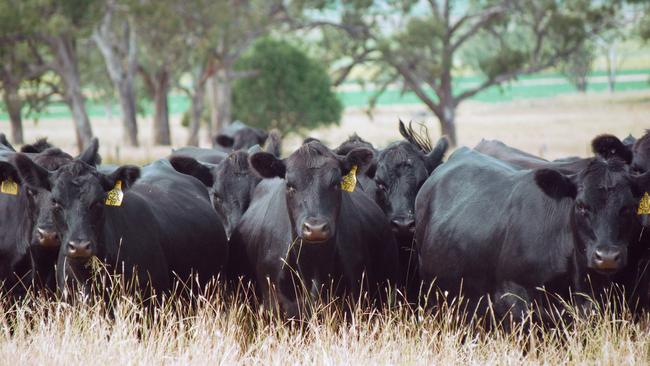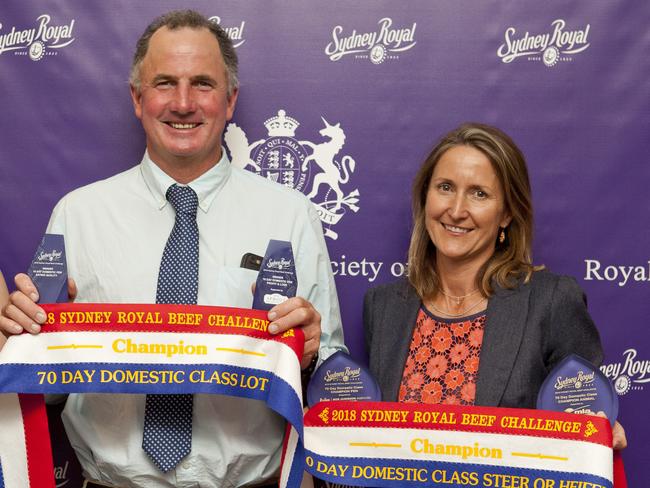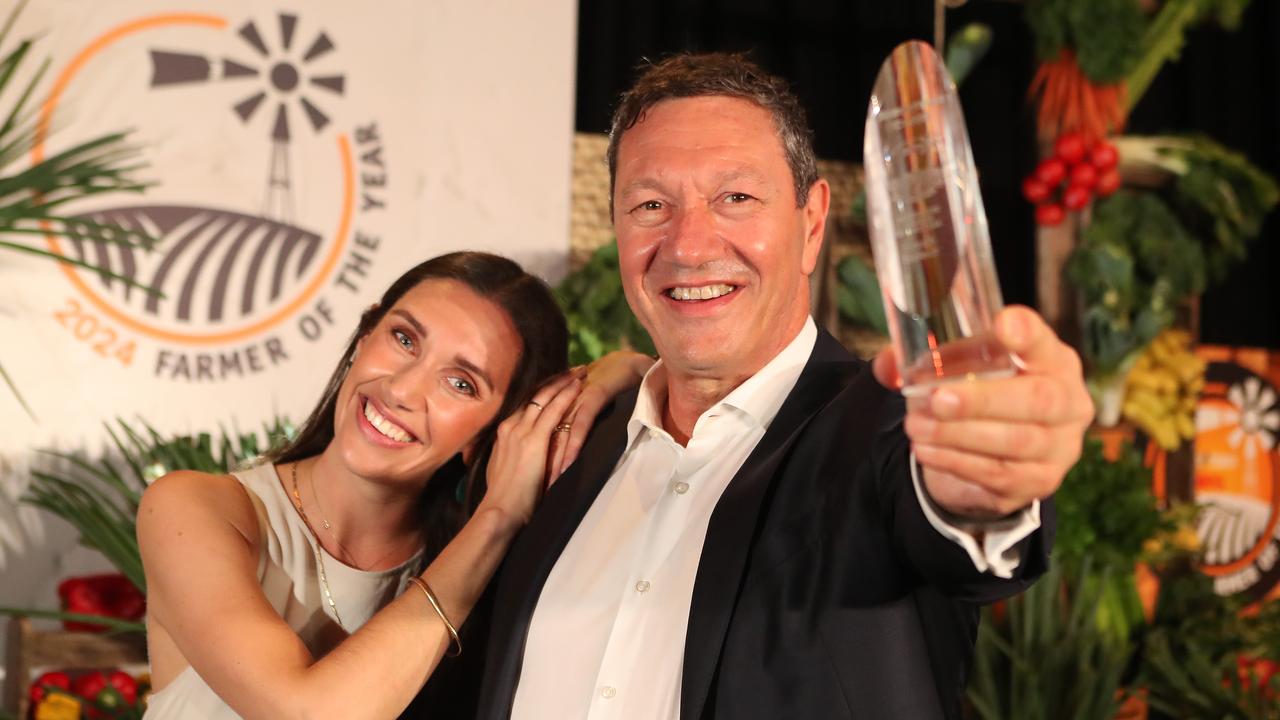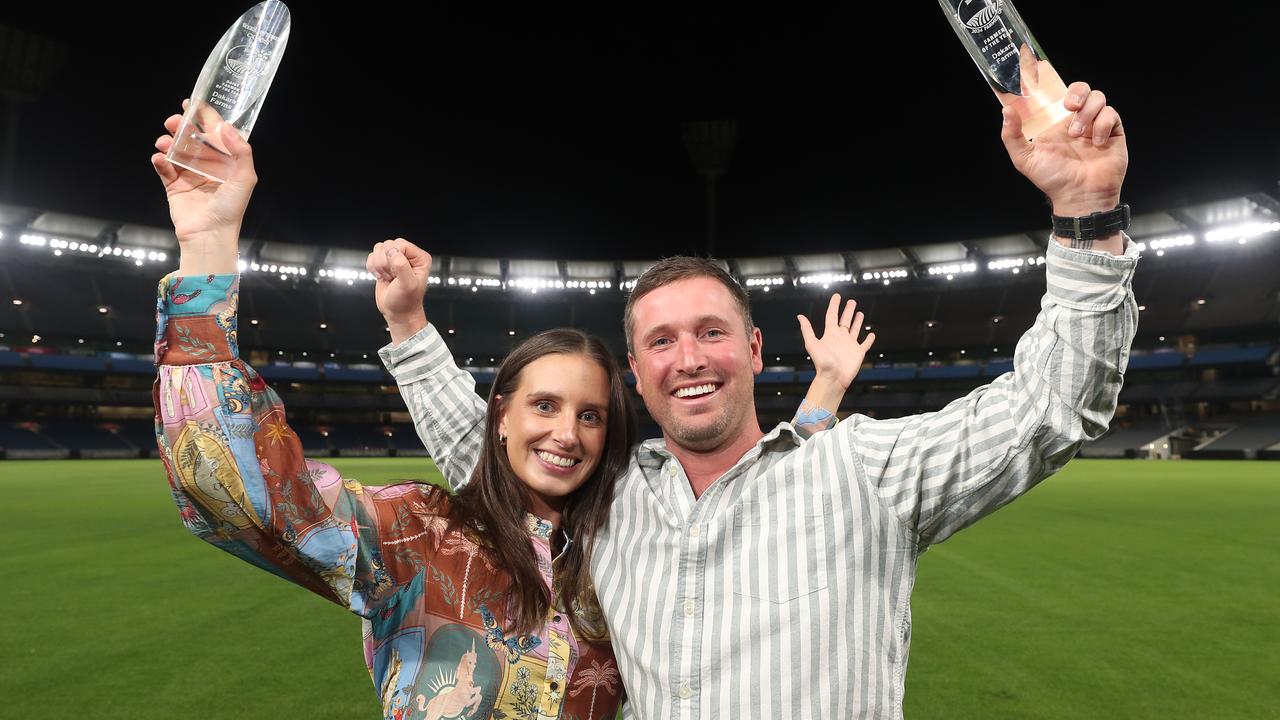Ben and Wendy Mayne from Texas Angus stud at Warialda lead from the front
CARCASS profitability rules at this northern NSW beef operation, writes JAMES WAGSTAFF.

FOR northern NSW beef producers Ben and Wendy Mayne, 2018 has produced the best and worst of times.
While widespread drought has meant their 2105ha operation northwest of Warialda has experienced one of its toughest seasons on record, their Texas Angus herd has notched up perhaps its most successful year yet.
It blitzed the field at not one but two of the nation’s biggest carcass competitions and defied a drought-led industry downturn in demand for genetics by selling all their bulls for a whopping average of $11,580 at its on-property production sale.
If that is not enough evidence of success, the Maynes’ cattle and land have held up well in this year’s harsh conditions, thanks to a strong focus on animal and soil health involving minimal chemical inputs, no synthetic fertilisers and probiotics in favour of chemical-rich supplementation licks for stock.

“We try to treat the gut of the animal and the soil the same — get the microorganisms and biology going,” Ben said. “We are big believers that this is why our cattle do so well … it’s not just the genetics — they can adapt so much better because they are right inside.”
It’s a seemingly clean bill of health for the herd, whose origins date back to 1936 when it was founded by the Scottish Australian Company at Texas Station on the NSW-Queensland border at Texas.
The Mayne family involvement with Texas Angus stretches back to 1953 when Ben’s father, Bill, and grandfather, WHC Mayne — then neighbours to Texas Station — purchased most of its cattle to establish their Gibraltar Angus stud. When the Scottish Australian Company later dissolved, it handed the Texas Angus prefix over to the family, which Bill and wife Judy took up when they went out on their own in 1981.
SOUTHERN COMFORT
THE stud shifted south to Warialda in 1998 and now comprises two blocks of 1700ha and 405ha running about 600 Angus cows.
“We do push things,” Ben said. “Our cows are never fat. We run them in big mobs and we run them hard and that’s probably one of the reasons we can put Angus bulls into areas not many other people can.”
The properties receive about 700mm of rain a year but Ben estimates only about 300-325mm has fallen so far this year.
H

e said seasons had been ordinary for the past 10 years but for “two or three good breaks” where they’d receive 250mm in two months “but then it would be dry for the rest of the year”.
“We got a small reprieve in ’15 — the summer wasn’t too bad — ’16 was bloody ordinary with a couple of sharp breaks … but it has been particularly bad for the past two-and-a-half years,” Ben said. “We are better than a lot. You go west of here, it gets pretty terrible.”
The Mayne properties feature seven different soil types including sandy, red loam, red clay, black self-mulching soils and heavy basalt rock. Any improved pastures are subtropical with natural grasses on most rocky country.
Ben said they deliberately hadn’t used any chemical-based fertilisers — “no urea, no DAP” — since 2003 in an effort to get the soil working for them. “Chemical-based fertiliser is a monoculture … ureas are bad but sulphate ammonia or anhydrous ammonia kills any microorganisms, so your plants are totally dependent on what you give them,” he said.
“It’s like a drug,” Wendy adds. “And when it doesn’t get it, it suffers and that’s why you see crops that are so good, so dark and so green one minute but as soon as things get hard they just fall over.”
Ben said they focused more on balancing the positive and negative ions of the soil. “When you’ve got them correlated together, all your microorganisms can live,” he said, adding that in good seasons they brewed their own microbes to spray on paddocks. “When it rains here, you can’t believe how quick it greens up”.
This year they managed to grow an oat crop when most of the district didn’t.
“Last year, when we had a wet period, you could go down into the oat paddocks and put a shovel into the soil and you would dig up worms,” Ben said. “But go through the boundary fence and you would not find a worm.”
SOLID FOUNDATION
EVERY animal on the property originates back to the same 22 heifers and one bull that came out to Australia from Scotland in 1936 to form the basis of the Scottish Australian Company herd at Texas Station.
“There has never been another maternal line come in,” said Ben, adding that when it came to selection “structure is king”. The Maynes do a lot of artificial insemination and embryo transfer work using their own and outside genetics.
Ben said to achieve a consistency in maternal lines they sought outside genetics “blend them with the herd and then try and breed a really good bull and then use back over the top”.
Ben said these outside genetics were sourced “from wherever we can find them”, including New Zealand and the US. He said there had traditionally been a lack of diversity in genetics in Australia but it was improving significantly more recently.
The Maynes do all their AI work themselves with the females then running with backup bulls for a 10-week calving during August, September and October. Any cow that doesn’t get in calf or is late getting in calf is generally culled.
Depending on the season, weaning takes place between three months and seven months and, in most years, occurs in March. Ben said the average age of the cow herd was about six years.
Texas Angus sells about 200 bulls a year, about 140 of which are sold at an on-property sale in July. The bulk of clients are in western Queensland — “Cloncurry, Richmond, Hughenden, Muttaburra, Longreach, all down through Blackall, Tambo, Augathella” with “another big run” through Taroom, Theodore, Banana, Nebo and the Atherton Tablelands. In NSW, there is strong support from the New England while bulls also go to Victoria and Tasmania.
Ben said the past three sales in particular had been “massive” for the stud. In 2016, 121 bulls averaged $9802 before lifting to an incredible $12,535 for 127 bulls last year. This year’s sale exceeded all expectations given the drought across eastern Australia with 138 bulls averaging $11,580.

CARCASS CALLING
THE Maynes put a lot of their bull sale success to the strong performance of surplus Texas Angus steers and heifers in feedlot carcass competitions in recent years.
They began entering the carcass competitions in 2014 as a way of benchmarking how their cattle stacked up against all breeds and crosses, more than just solely relying on Breedplan figures or estimated breeding values.
“Even though we are a big believer of the EBV system, If you just follow the numbers trade, you can make really good numbers by just putting numbers on numbers on numbers, and you’ve not necessarily got the right item in the paddock,” Ben said. “We are a stickler for type and it is quite often hard to put numbers and type together.”
At Beef Australia Rockhampton in May this year, the Maynes won champion pen of three 100-day grainfed export chiller bullocks. With 492 entries, the class was the biggest in the competition, which itself attracted 1077 exhibits from across Australia.
They followed this success up in September with the grand champion 70-day domestic pen and grand champion 70-day domestic individual in the NSW Royal Agricultural Society’s Beef Challenge.
It was the fourth consecutive year the Maynes had won a broad ribbon in the competition. This year, their winning pen returned a profit of $1120.19. This was $835.15 a head more profitable than the average of the 55 domestic pens entered in the competition.
Ben said profitability of carcasses is becoming increasingly more important, particularly with the introduction of DEXA objective carcass measurement systems, which will see producers being paid according to carcass weight, carcass quality, yield, marbling etc.
He said the difference in the value of the first and last-placed carcasses at Rockhampton was more than $1400, and to counter such variations, processors were now offering significant premiums for particular bloodline cattle that they know perform well and are ultimately more profitable.
“When there is such little variation of these particular bloodlines, the processors know where the average mean of profitability is and they are able to say ‘righto, we can pay an extra couple of hundred dollars for those steers knowing they are going to be an extra $500 or so in front per carcass,” he said.
“This is where the industry is going to go. The days of old mate going and buying Tom, Dick and Harry’s cows and then getting Joe Blow’s bulls … they’re gone.”


